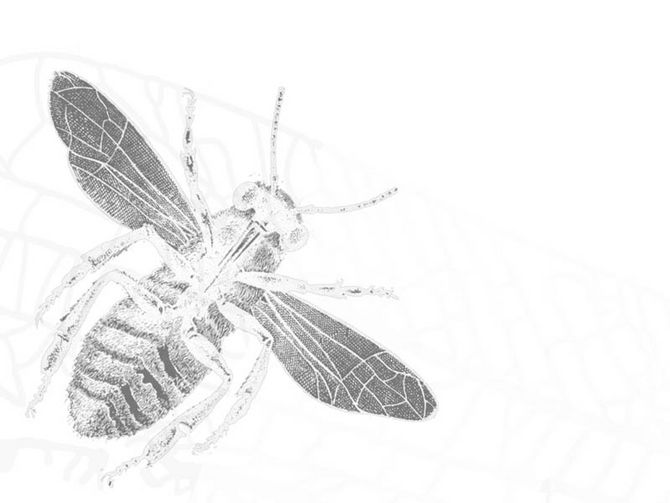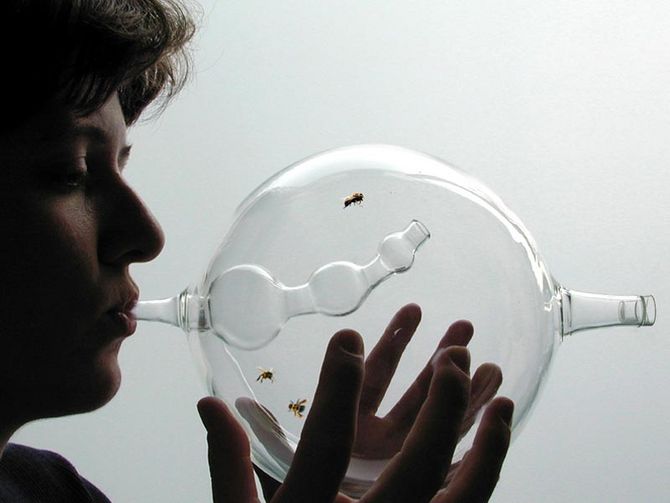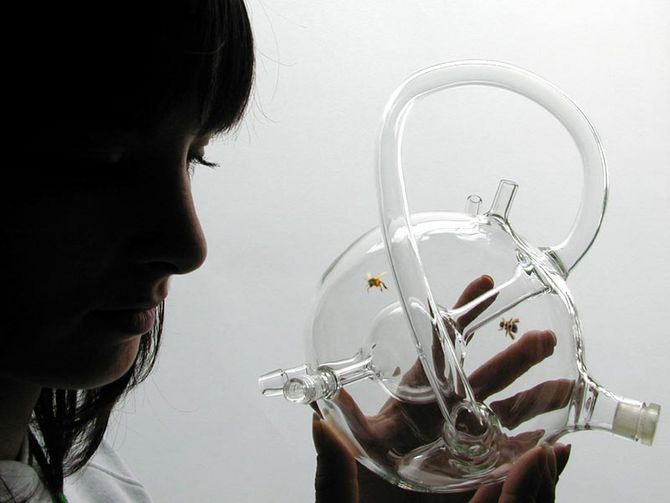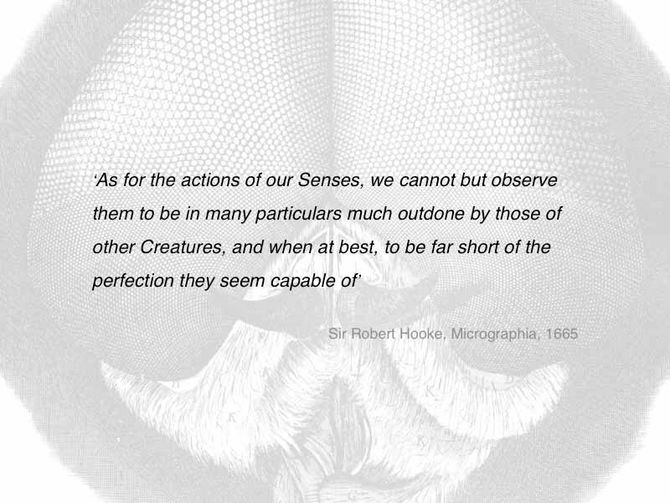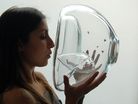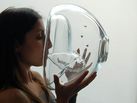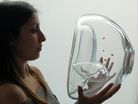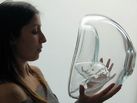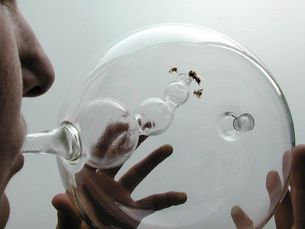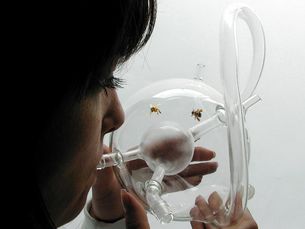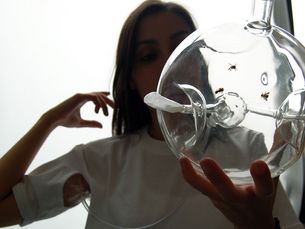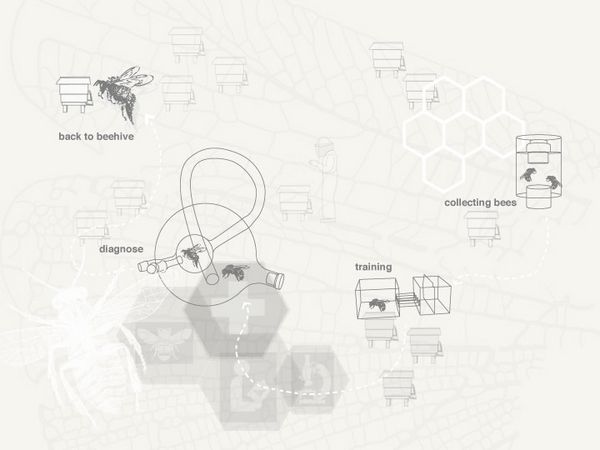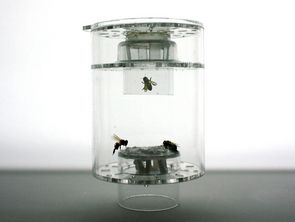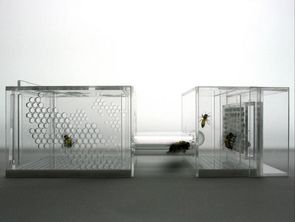Bee´s / Project
Bee's explores how we might co-habit with natural biological systems and use their potential to increase our perceptive abilities.
The objects facilitate bees' odour detection abilities in human breath. Bees can be trained within 10 minutes using Pavlov’s reflex to target a wide range of natural and man-made chemicals and odours, including the biomarkers associated with certain diseases.
The aim of the project is to develop upon current technological research by using design to translate the outcome into systems and objects that people can understand and use, engendering significant adjustments in their lives and mind set.
How it works
The glass objects have two enclosures: a smaller chamber that serves as the diagnosis space and a bigger chamber where previously trained bees are kept for the short period of time necessary for them to detect general health. People exhale into the smaller chamber and the bees rush into it if they detect on the breath the odour that they where trained to target.
What can bees detect?
Scientific research demonstrated that bees can diagnose accurately at an early stage a vast variety of diseases, such as: tuberculosis, lung and skin cancer, and diabetes.
Diagnostic tool 2: person exhaling into the diagnostic chamber, 26*15 cm, prototype 2007; borosilicate; Vilabo, Portugal
Precise object
The outer curved tube helps bees avoid from flying accidentally into the interior diagnosis chamber, making for a more precise result. The tubes connected to the small chamber create condensation, so that exhalation is visible.
Precise object, 22*12 cm, prototype 2007; borosilicate; Vilabo, Portugal
The bee clinic
These diagnostic tools would be part of system that uses bees as a biosensor.
The systems implies:
- A BEE CENTRE: a structure that facilitates the technologic potential of bees. Within the centre is a BEEFARM, a TRAINING CENTRE, a RESEARCH lab and a HEALTHCARE CENTRE.
- TRAINING CENTER: courses can be taken on beetraining where bees are collected and trained by beetrainers. These are specialists that learn beetraining techniques to be used in a large scope of applications, including diagnosing diseases.
- BEE clinic: bees are used at the clinic for screening tests. These insects are very accurate in early medical diagnosis through detection on a person's breath. Bees are a sustainable and valuable resource. After performing the diagnose in the clinic they are released, returning to their beehive.
What if people started to be screened by bees for cancer? Which one would we trust more, a machine or a biosensor? Could beetraining become a profession?
Bee training
Bees can be easily trained using Pavlov’s reflex to target a wide range of natural and man-made chemicals odours including the biomarkers associated with certain diseases. The training consists in baffling the bees with a specific odour and feeding them with a solution of water and sugar, therefore they associate that odour with a food reward.
Acknowledgements:
Calouste Gulbenkian Foundation
Royal College of Art, Design Interactions Department: Professor Anthony Dunne and Ms. Fiona Raby
Crisform: Designer Sónia Durães and Glass Master Mateus
Vilabo: Mr. João Gomes
London Beekeeper Association: Mr. David Perkins
Inscentinel, Bee research team at Rothamsted Research, UK: Dr. Mathilde Briens
Credits:
Susana Soares
Models:
Bernardete Fernandes
Clarie Ducruet
Margarida Martins

